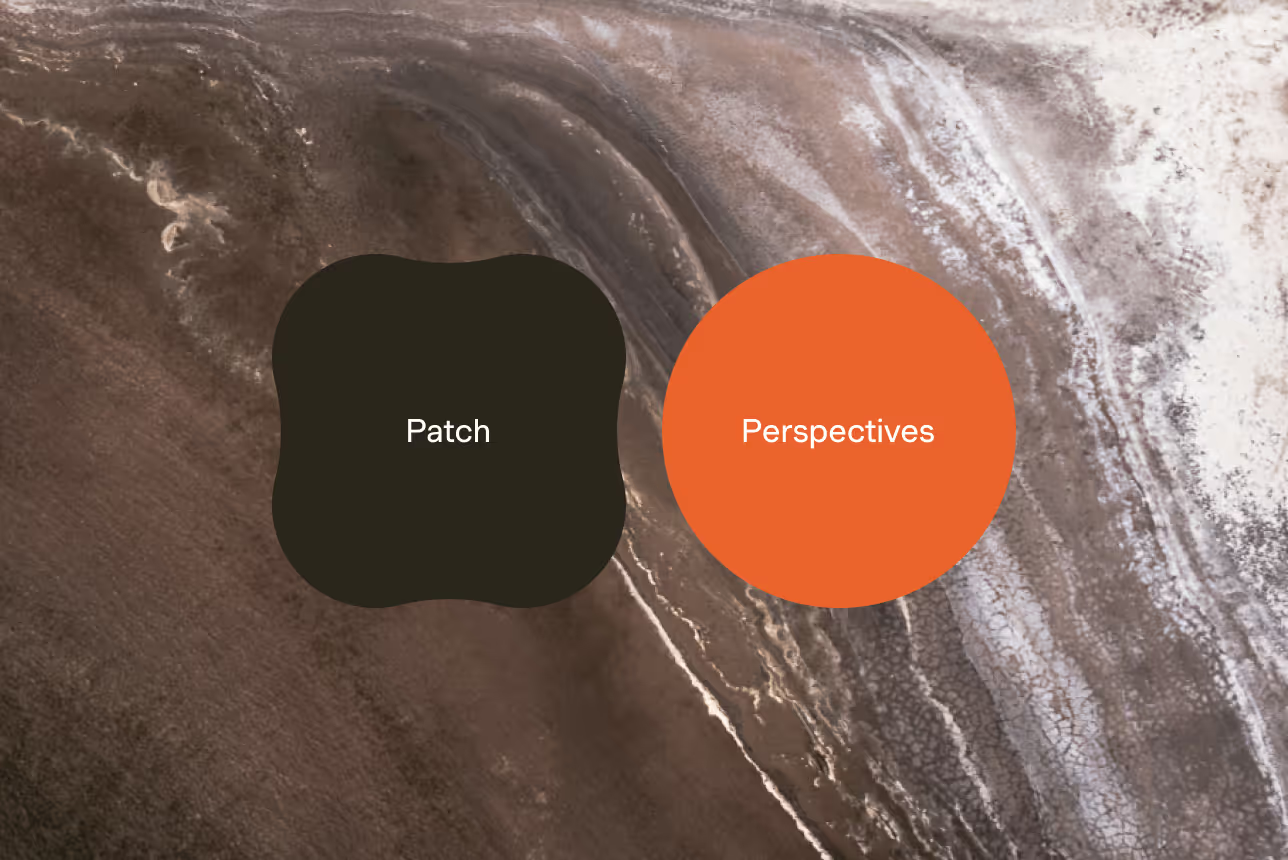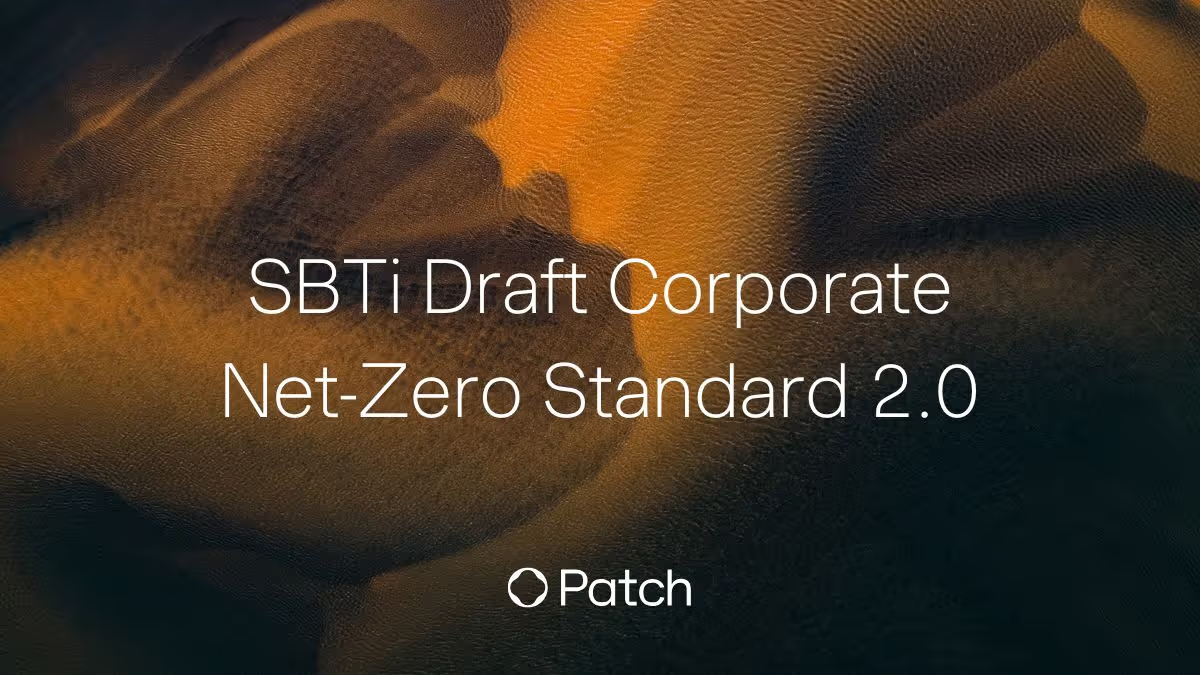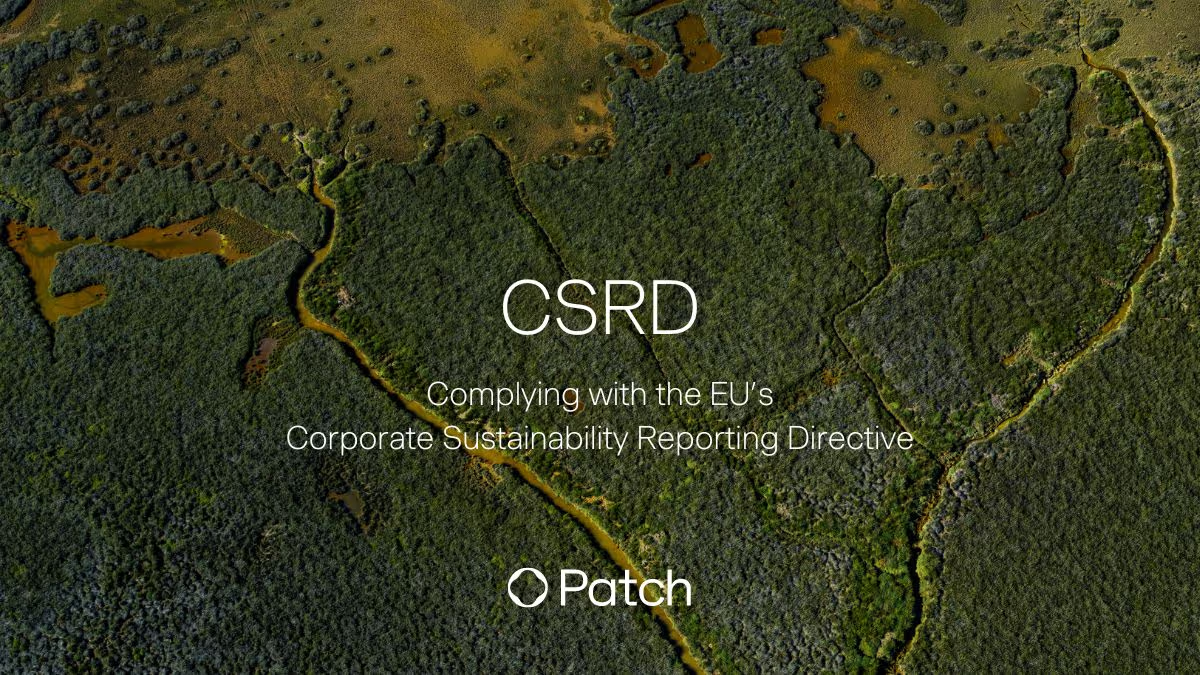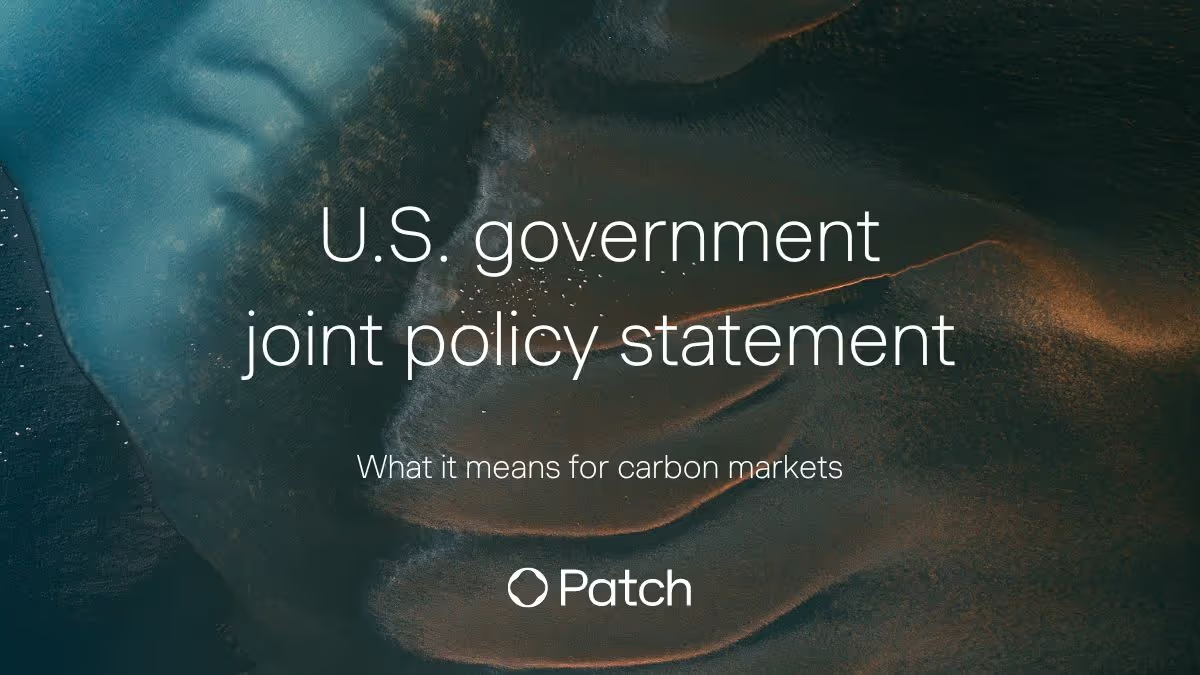Patch was born out of a very simple question: How can climate action be catalyzed on the transformative scale needed to make global impact? The answer—by embedding it into every part of the economy—underpins our mission of enabling climate action anywhere and everywhere.
Encouragingly, interest in voluntary carbon markets is growing exponentially. Demand for carbon credits is expected to increase a hundredfold by 2050, alongside a broader climate-action push to reach the 1.5°C global goal.
But companies ready to compensate for their unavoidable emissions or contribute somehow to carbon markets have historically run up against significant friction. That’s because the voluntary carbon market has been weighed down by obstacles to market participation, including high purchase minimums, rigid pricing structures, a disorganized marketplace, and even concerns about the value and integrity of the carbon credits themselves.
That’s a problem, since the latest climate science shows that reaching 1.5°C will require an increase in carbon removal by one million times the current global capacity—meaning it’s more important than ever to break down these barriers that are preventing the market from scaling.
We know that the pathway to at-scale markets runs directly through software. That’s why we’ve set out to solve four of the biggest structural barriers to carbon market engagement through a world-class software experience. Our goal is to democratize access to climate action by making voluntary carbon markets more accessible, transparent, and navigable for all parties.
1. Removing purchase minimums
Purchasing carbon credits has historically required large budgets, sizable access fees, and complex term sheets over long deal cycles. It’s not uncommon to face a 1,000-tonne minimum to make a purchase, or more recently, to run into “buyers clubs” that call for $50M in capital commitments to participate.
Smaller companies looking to participate in the voluntary carbon market are often cut off by these barriers. In reality, carbon credit buyers range from multimillion-dollar corporations to three-person companies to individuals. Patch’s product was built and is continually refined with access in mind. It has no minimums or dashboard access fees, which allows us to serve companies across the economic spectrum.
Moreover, we fractionalize tonnes down to the gram-level, or one-millionth of a tonne. This, combined with our API-based approach, means the Patch marketplace can be embedded into tens of millions of consumer applications globally, drastically lowering the contribution threshold.
2. Enabling flexible contribution models
Companies able to meet the purchase minimums in traditional buying scenarios soon face another climate action barrier: buying structures. These limit buyers to a small selection of projects and available prices per tonne.
Typically, buyers have a given budget to devote to carbon credits or a set amount of carbon equivalent emissions they’d like to mitigate. One company, for instance, might want to reduce the impact of five tonnes of emissions with a budget of $250—or essentially a $50/tonne rate. Unfortunately, traditional 1:1 deal project pricing isn’t flexible, meaning a project selling credits at $100/tonne won’t be able to work with this buyer. Similarly, a company that can afford $50/tonne, but which pairs up with a project developer selling carbon credits at $10/tonne, is leaving climate action capital on the table—meaning the company may be missing opportunities to invest in more innovative carbon credits.
Patch works with buyers to set realistic and ambitious pricing goals. In our marketplace, higher-costing credits often represent carbon removal strategies with greater sequestration potential, but which are still nascent and require investment at scale. We recognize that only buying higher cost credits isn’t always feasible, however. That’s why the Patch marketplace offers maximum flexibility through our portfolio structures. Our customers can mix and match carbon credits to balance out ambition and feasibility. With a $50 per tonne budget, for example, a customer can purchase a custom mix of high-impact projects that include both innovative and traditional approaches.
By assisting buyers to clearly articulate their goals and allocate their budget across multiple project types, we're consistently seeing net new funding unlocked to help catalyze some of the innovative solutions needed to achieve global climate goals.
3. Delivering an organized experience
While voluntary carbon markets have been evolving for more than two decades, the technology infrastructure supporting them has not. Up until the last few years, hardly any software products were underpinning the markets. That contributed to a fundamentally disorganized buying experience with no centralized marketplace and no way to make comparisons between credits. A common starting point with a carbon credit broker could turn into a multi-month journey with multiple email threads, no clear point of contact, and sometimes end with no purchase. Potential buyers were stuck with less-than-ideal purchase agreements or got so bogged down in the system that they gave up before ever being able to take their desired climate action.
Marketplace infrastructure shouldn’t be a bottleneck to access. That’s why Patch prioritizes a seamless and organized marketplace experience. This means bringing all relevant purchasing criteria into a single place, providing ample projects for comparative pricing and enabling immediate action—a “click to buy” solution that is rare to find across the environmental commodity spectrum.
4. Building trust through transparency
Under the traditional model, a business that manages to move forward with a carbon credit purchase often still experiences a trust and understanding gap. A buyer may not understand, or worse yet, may not have readily available access to certification information, credit attributes like vintage, permanence, and additionality, or trade-offs between available mitigation and removal projects.
But anyone who spends money on climate action should know exactly what kind of impact their purchase has—and how to track that impact. Patch believes in radical transparency for the carbon credit market and our dashboard compiles all the information a buyer needs in one organized place, including:
- Project details: This might include (but isn’t limited to) the project’s impact mechanisms, origin story, societal impact, co-benefits, geographic location, and project developer information.
- Expert ratings: Expert ratings like BeZero and CarbonPlan are integrated into our platform, alongside details on project status with traditional certification standards from entities such as Verra and Gold Standard. This allows buyers to fully contextualize a project's quality—including key drivers like additionality, permanence, and risk of leakage.
- Impact tracking: In addition to pre-purchase transparency, we recently raised the bar on post-purchase transparency, enabling live tracking of project development, certification, and delivery status. We’re excited to continue raising the bar.
Moreover, our software products empower project developers to easily own and operate their business from end-to-end and ultimately build more trust with their end customers.
Help us make climate action accessible
Patch is democratizing access to climate action.
Together, we can transform the once inaccessible, opaque, and inflexible voluntary carbon markets to enable climate action by anyone, at any time. Here are three ways you can join us:
- Access the marketplace! Whether you are hoping to self-serve or seeking guidance from our expert Climate team—we’re ready to help.
- If you see something, say something. Tell us where we could improve our solutions for accessible climate action.
- Work with us! Patch is a home for climate enthusiasts and climate experts, and we’ve purposely built a team of functional experts (in software, design, fintech, and beyond) who bring fresh eyes to the problems at hand. If you’re interested in joining our team, visit our careers page.






